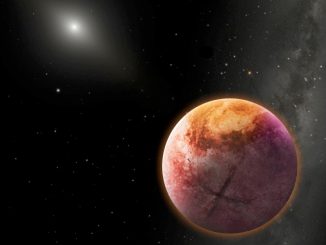
Appearances can be deceiving. Just ask Alan Stern, principal investigator with NASA’s New Horizons mission.
During the recent approach and New Year’s Day flyby of a Kuiper Belt body known as Ultima Thule, New Horizons set back an initial few pictures showing a strange bilobate body, an apparent contact binary shaped somewhat like a snowman. A larger roughly spherical component was dubbed Ultima while the smaller “head,” nicknamed Thule, was attached by a fragile looking neck. Thule also appeared to be roughly spherical.
But subsequent analysis, including images showing Ultima Thule receding as New Horizons flew past at more than 50,000 kilometres per hour (31,000 mph), showed the the two lobes are not spherical after all. The larger component resembles a giant pancake-like body while the smaller lobe looks more like a dented walnut.
“We had an impression of Ultima Thule based on the limited number of images returned in the days around the flyby, but seeing more data has significantly changed our view,” Stern said in a release posted on the New Horizons website. “It would be closer to reality to say Ultima Thule’s shape is flatter, like a pancake. But more importantly, the new images are creating scientific puzzles about how such an object could even be formed. We’ve never seen something like this orbiting the Sun.”
The departure images were taken from a different angle than earlier photos. The receding crescent is somewhat blurred in the photos, the result of longer exposure times intended to boost the camera’s signal strength. The photos showed numerous background stars and by noting when stars “blinked out” as the angles changed, researchers could map the general shapes of both lobes. Some of those images were put together to make a short movie showing Ultima Thule receding as New Horizons flew past:
“While the very nature of a fast flyby in some ways limits how well we can determine the true shape of Ultima Thule, the new results clearly show that Ultima and Thule are much flatter than originally believed, and much flatter than expected,” said Hal Weaver, New Horizons project scientist at Johns Hopkins University’s Applied Physics Laboratory.
“This will undoubtedly motivate new theories of planetesimal formation in the early solar system,” he added.



